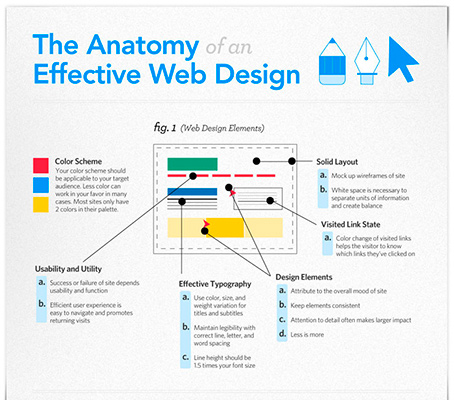Crucial Site Layout Insights: Recommendations For Building An User-Friendly User Interface
Crucial Site Layout Insights: Recommendations For Building An User-Friendly User Interface
Blog Article
Content Written By-Le Daugaard
When it concerns internet site design, ensuring user-friendliness is crucial. From receptive layout to streamlined navigation, every element plays an important duty in creating a site that deals with your audience's requirements. But what regarding the better information that can make or damage an individual's searching experience? Keep tuned as we reveal some often-overlooked ideas that can raise your site's functionality to the following degree, making it absolutely stick out in the digital landscape.
Importance of Responsive Design
Receptive design is a vital element of contemporary internet site advancement. Ensuring your web site is responsive methods that it can adapt to various screen dimensions and devices, supplying a seamless experience for customers.
With the raising use of smart devices and tablets to access the internet, having a responsive design is important for getting to a larger audience. It assists in enhancing customer experience by making your internet site very easy to browse and read on any type of gadget.
In addition, responsive layout can favorably affect your online search engine rankings, as search engines like Google focus on mobile-friendly web sites. By having a responsive design, you're additionally future-proofing your web site, as new devices with varying screen sizes continue to arise.
Simplify Navigating Framework
To boost individual experience and help with easy access to details on your internet site, improving the navigating structure is critical. When creating your site, focus on creating a clear and instinctive navigation food selection that assists site visitors discover what they're seeking promptly.
Limitation the number of food selection products to the basics, organizing associated pages together to prevent overwhelming users. Usage descriptive tags that plainly indicate the material of each page, making it less complicated for customers to recognize where each web link will take them.
Think about implementing dropdown menus for subcategories to prevent cluttering the major navigation bar. Furthermore, consist of see it here on the page for individuals who prefer looking for particular information.
https://www.cmswire.com/digital-marketing/what-is-inbound-marketing-and-how-does-it-support-marketing-strategy/ on mobile responsiveness in your navigating design to ensure simple gain access to on all gadgets.
Optimize Web Page Tons Rate
Improving web page load rate is essential for preserving site visitors on your internet site. Slow-loading pages frustrate customers and can cause high bounce rates. To optimize web page tons rate, start by maximizing pictures. Press photos without endangering quality to minimize their file dimensions.
Additionally, make it possible for browser caching to store regularly accessed resources locally, quickening lots times for returning visitors. Minify CSS, JavaScript, and HTML files by removing unneeded personalities, comments, and format, boosting load rate.
Take into consideration using a material distribution network (CDN) to disperse your internet site's content across multiple servers worldwide, decreasing latency for customers accessing your website from various locations. Lastly, limit using third-party scripts and plugins, as they can dramatically influence load times.
Verdict
To conclude, by integrating responsive layout, streamlining navigation, and optimizing web page load rate, you can produce an user-friendly website that interest a larger target market and boosts customer experience. ada compliance for websites that visitors can easily accessibility and navigate your site across various tools, bring about raised interaction and complete satisfaction. By focusing on these key aspects, you can develop an effective internet site that maintains customers coming back for even more.
